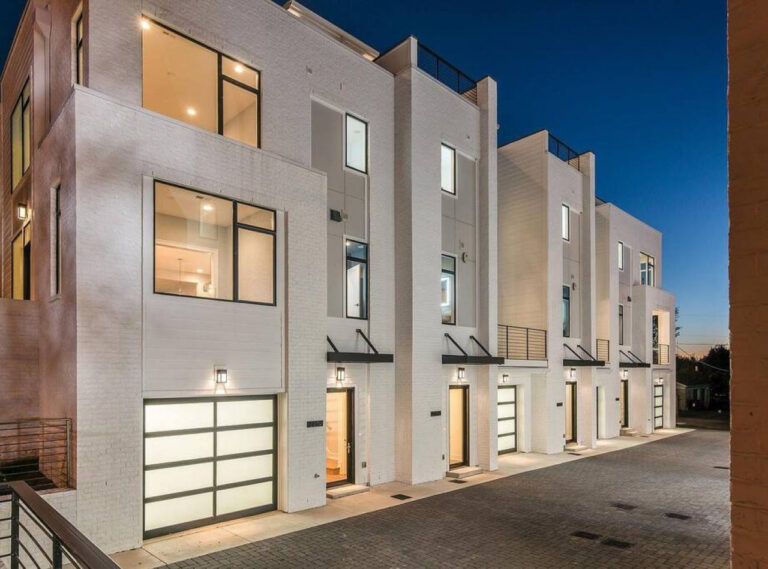At Unwind Luxury Vacations, we know what it takes to meet the high bar of luxury. It means excelling at the highest level on every detail of your stay.
One of the most noticeable ways we bring luxury to your vacation experience is through exceptional interior design.
Our lead designer, Meghan Andreu, and our talented team of interior designers transform Unwind properties into a luxury oasis, putting your comfort and relaxation at the top of the list. With our extensive experience, we understand what maximizes the enjoyment of each property and turns a vacation home into a luxury vacation home.
Luxury interior design is more than just high-end furniture and expensive materials—it’s a carefully curated experience that embodies comfort, elegance, and sophistication. The key to achieving a luxurious space lies in balancing aesthetics, functionality, and personalization.
In this blog, we’ll explore the five fundamental principles of luxury interior design and how they contribute to creating an atmosphere of opulence and refinement.
1. Exquisite Craftsmanship and High-Quality Materials
One of the defining elements of luxury interior design is the use of high-quality materials and impeccable craftsmanship. Luxury is often synonymous with exclusivity, and nothing speaks of exclusivity more than custom-made furnishings, hand-finished details, and materials sourced from the finest suppliers.
Materials that Define Luxury
When selecting materials for a luxury interior, designers prioritize:
- Natural Stones – Marble, onyx, granite, and quartz exude timeless elegance. Marble countertops, fireplaces, and flooring are hallmarks of opulence.
- Exotic Woods – Mahogany, ebony, and walnut provide warmth and sophistication, commonly used in furniture, cabinetry, and flooring.
- Metals & Finishes – Gold, brass, bronze, and chrome add a touch of glamour, often seen in fixtures, trims, and accents.
- Plush Fabrics – Velvet, silk, and cashmere elevate upholstery, curtains, and bedding, enhancing both comfort and visual appeal.
The Importance of Craftsmanship
Luxury is not just about expensive materials—it’s about how they’re crafted. Custom-built cabinetry, intricate woodwork, and artisanal textiles reflect a high level of expertise and attention to detail. Handwoven rugs, hand-painted wallpapers, and made-to-order furniture ensure that every piece in the space is unique and curated specifically for the client.
Pro Tip: Investing in bespoke furniture and handcrafted details ensures that the interior reflects individuality and exclusivity, hallmarks of true luxury.
2. Thoughtful Spatial Planning and Functionality
Luxury interiors are not just visually stunning—they are also highly functional and meticulously planned. Spatial planning is crucial in ensuring that the layout flows seamlessly and serves the lifestyle of the inhabitants.
Optimized Layouts for Comfort and Elegance
In luxury interior design, every square foot is intentional. Designers consider:
- Open-Concept Living – Expansive, open spaces create an airy and grand ambiance. However, zones are subtly defined through furniture arrangements, rugs, or statement lighting.
- Symmetry and Balance – A well-balanced space promotes harmony and tranquility. Pairing elements like matching sofas or symmetrical wall decor creates a cohesive look.
- Seamless Transitions – Luxury interiors prioritize smooth transitions between spaces, ensuring that movement within the home feels effortless. Wide hallways, grand archways, and floor-to-ceiling glass doors enhance flow.
Multifunctionality with Elegance
High-end design seamlessly integrates technology and functionality without compromising aesthetics. Some examples include:
- Smart Home Integration – Automated lighting, climate control, and hidden entertainment systems enhance convenience.
- Hidden Storage Solutions – Custom cabinetry, built-in wardrobes, and under-bed storage help maintain a clutter-free, sophisticated space.
- Flexible Spaces – Multi-use areas, such as a living room that converts into a home theater, provide versatility while maintaining luxury.
Pro Tip: Prioritize both beauty and practicality by ensuring that each design element serves a functional purpose while maintaining an air of sophistication.
3. Timeless Design with Personalization
A true luxury interior is timeless—it doesn’t follow fleeting trends but instead embodies enduring elegance and personal expression. While modern influences can be incorporated, the core design should remain refined and relevant for years to come.
Classic Elements of Timeless Luxury
Luxury spaces often incorporate:
- Neutral Color Palettes – Shades of white, beige, taupe, and gray create a serene and sophisticated foundation.
- Statement Pieces – A grand chandelier, an ornate mirror, or an antique furniture piece adds character and refinement.
- Quality Over Quantity – Instead of overcrowding a space with decor, luxury design focuses on a few, well-chosen pieces that make an impact.
Personalization: The Ultimate Luxury
True luxury means bespoke design that reflects the owner’s personality, tastes, and lifestyle. Some ways to achieve this include:
- Custom Art and Sculptures – Commissioning original artwork or displaying unique sculptures adds a personal and sophisticated touch.
- Bespoke Furniture – Custom-designed pieces tailored to specific dimensions and aesthetics ensure exclusivity.
- Incorporating Sentimental Elements – Whether it’s a collection of rare books, a vintage heirloom, or a personally curated gallery wall, luxury interiors tell a story through their decor.
Pro Tip: Work with artisans, interior designers, and craftsmen to incorporate unique, meaningful touches into your space for a truly one-of-a-kind environment.
4. Layered Lighting for Ambience and Mood
Lighting is one of the most essential elements of luxury interior design—it not only enhances the aesthetics but also sets the mood and ambiance of a space. High-end interiors rely on a layered lighting approach that combines different sources for a balanced, inviting atmosphere.
Types of Lighting in Luxury Interiors
- Ambient Lighting – The main source of light in a space, such as recessed ceiling lights, cove lighting, and large chandeliers.
- Task Lighting – Functional lighting for specific activities, such as reading lamps, under-cabinet lighting, or vanity mirrors.
- Accent Lighting – Used to highlight artwork, architectural details, or statement decor. Examples include wall sconces, LED strip lights, and picture lights.
Dramatic and Elegant Lighting Fixtures
Luxury interiors often feature striking lighting pieces that double as works of art. Some opulent choices include:
- Crystal Chandeliers – Perfect for entryways, dining rooms, and grand staircases.
- Sculptural Pendant Lights – Unique, eye-catching designs add a contemporary touch.
- Wall Sconces with Metallic Finishes – Ideal for hallways and accent walls.
Pro Tip: Use dimmable lights and smart lighting controls to effortlessly adjust brightness and create different moods throughout the day.
5. Sensory Experience and Comfort
Luxury is not just about how a space looks—it’s about how it feels. A truly high-end interior engages all the senses, creating an experience that is both visually stunning and incredibly comfortable.
Textures That Enhance Comfort
A well-designed luxury space incorporates a variety of textures to add depth and warmth:
- Plush Rugs and Carpets – Soft, high-pile rugs add warmth and comfort underfoot.
- Velvet and Silk Upholstery – These materials feel luxurious to the touch and add richness to furniture.
- Natural Wood and Stone – Materials like walnut, travertine, and leather provide a tactile, organic appeal.
Fragrance and Acoustics
Luxury interiors often incorporate elements that enhance scent and sound to create a holistic experience:
- Aromatherapy and Scented Candles – Signature scents like lavender, sandalwood, or fresh linen elevate the atmosphere.
- Soft Acoustics – Soundproofing techniques, plush drapery, and well-placed furniture can improve acoustics and minimize echo for a more serene ambiance.
Wellness and Relaxation
The ultimate goal of luxury interior design is to create a sanctuary where one can unwind. Spa-like bathrooms, cozy reading nooks, and serene outdoor spaces contribute to a holistic sense of well-being.
Pro Tip: Incorporate elements that engage multiple senses—soft fabrics, warm lighting, pleasant scents, and calming sounds—to create a truly immersive luxury experience.
Unwind with Us
Luxury interior design is more than just expensive furniture and trendy decor—it’s about curating an experience of sophistication, comfort, and timeless elegance. By following these five principles—exquisite craftsmanship, thoughtful spatial planning, timeless design, layered lighting, and sensory engagement—Unwind has created spaces that are not only visually stunning but also deeply enriching.
Meghan and our team of interior designers have curated luxurious homes just for you and your group. So visit our growing list of properties and choose the perfectly designed home for your next getaway.


